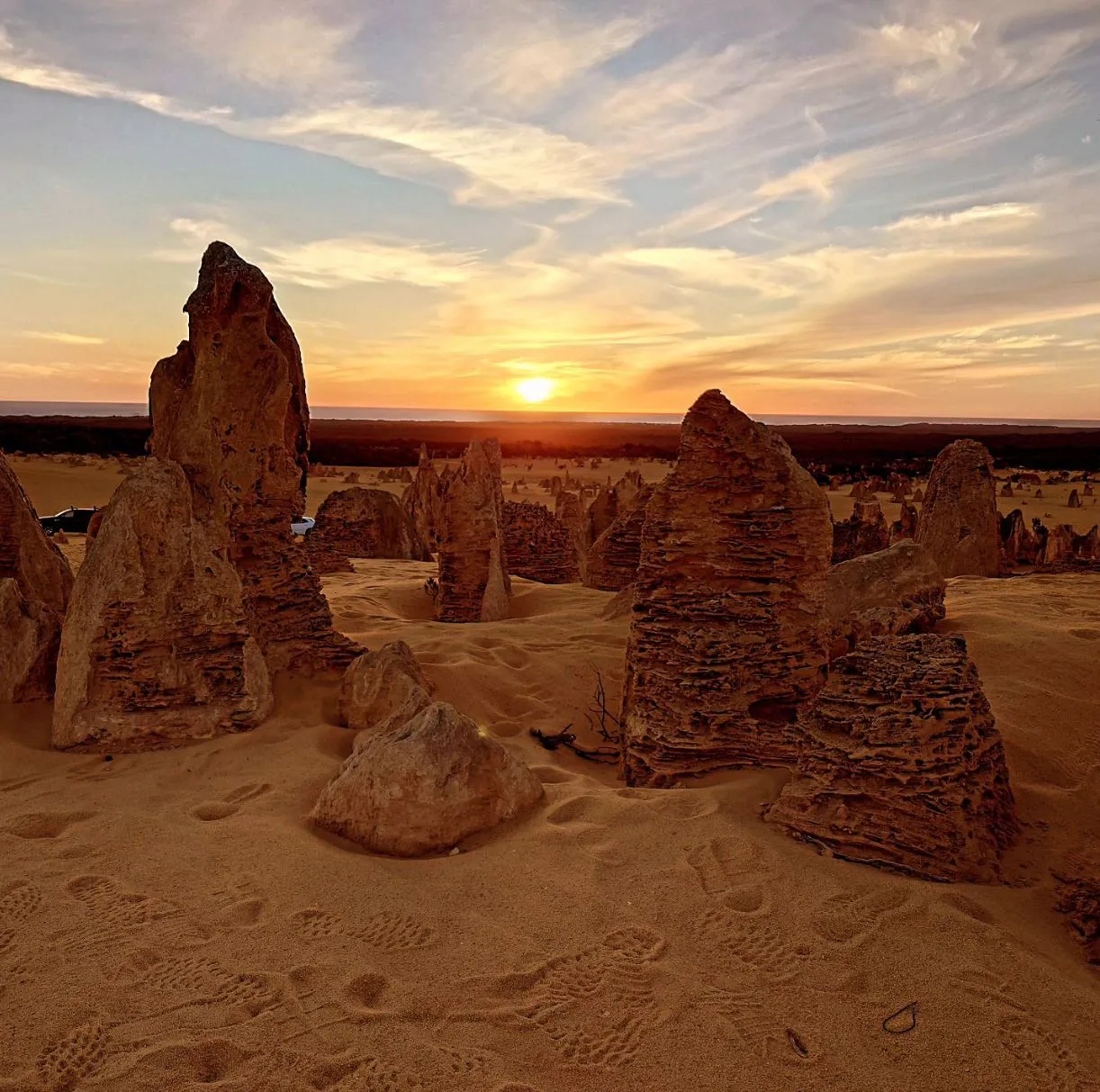In Nambung National Park, Western Australia’s Pinnacles Desert is one of the state’s most amazing and bizarre landscapes. This huge expanse of yellow sand with towering limestone pillars is an unforgettable trip into the past. It’s like walking among giants as the formations rise up from the desert floor, and it’s a landscape that attracts visitors from all over the world. The Pinnacles and the surrounding natural wonders, coastlines and wildlife are a must-see if you’re in Western Australia.
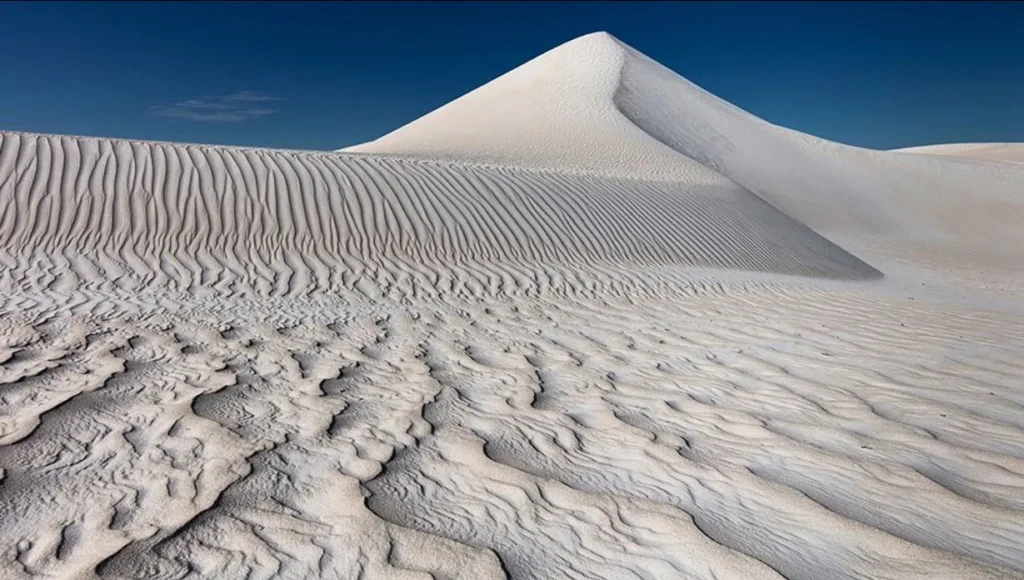
Geological Wonders
The Pinnacles Desert has thousands of limestone formations, some as tall as 4 meters and others just a few centimetres above the sand. These ancient rock formations were formed between 25,000 to 30,000 years ago when the area was underwater. The geological process began with the accumulation of seashells that were compressed and cemented into limestone over time. When the sea retreated and the land was exposed, wind and water erosion carved the formations into their current shapes and left us with these towering limestone pillars.
What makes the Pinnacles even more amazing is the different shapes and textures. Some are jagged spires, others are smooth and cylindrical. Each one is individual, a result of millions of years of erosion and geological process. Walking among these incredible rock formations you can’t help but be in awe of nature. The Pinnacles is a dynamic landscape, the desert sand is always shifting, uncovering new formations and burying others.
A Dream World
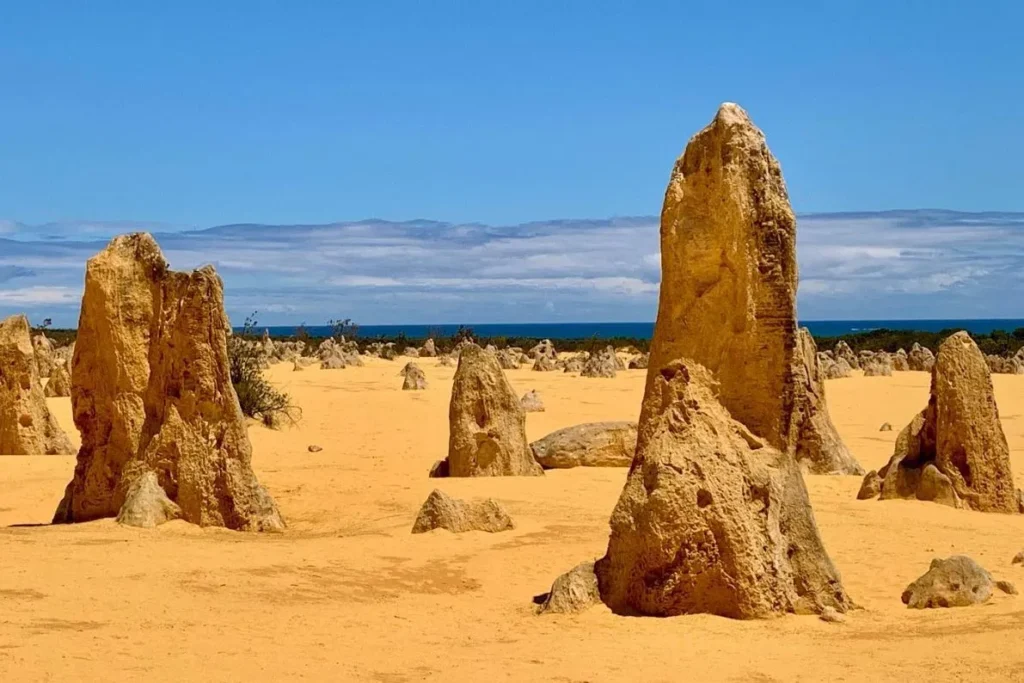
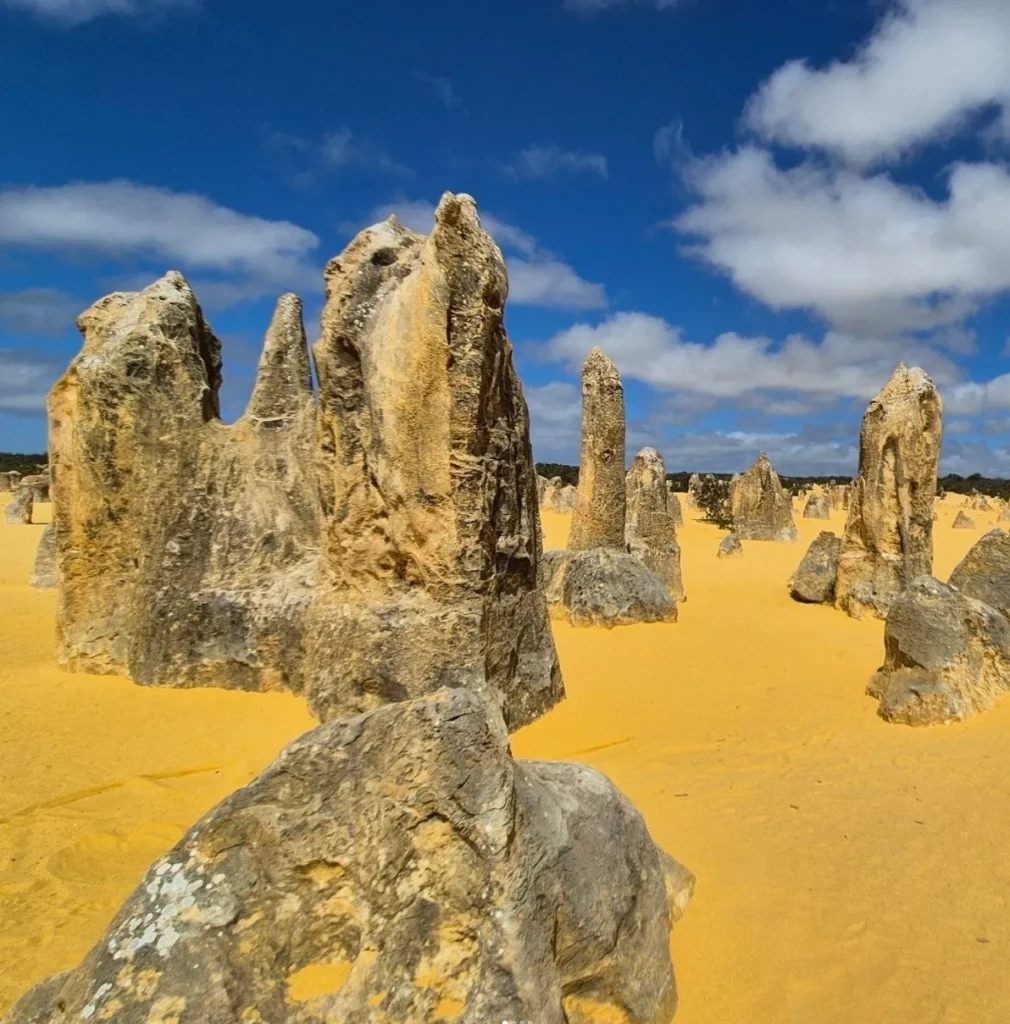
Walking into the Pinnacle Desert is like entering another dimension. The landscape stretches out before you in every direction, the yellow sand against the blue sky is stark. The pillars cast long shadows across the desert floor, especially at sunrise and sunset when the light is magic. This is the most surreal at these times, when the low angle of the sun brings out the texture and colour of the limestone pillars and it’s a photographer’s heaven.
You can walk or drive into the Pinnacles. There are several walking trails that take you into the heart of the Pinnacles, so you can get up close to the formations and experience them for yourself. Or take the scenic drive and get the views without leaving your car. Whatever you choose, it will be amazing.
From the Pinnacles Desert Lookout, you can see the vastness of Western Australia. The view is stunning. The iconic landscape stretches out to the horizon on a clear day, and you can see the Indian Ocean in the distance, the blue water against the yellow sand of the Pinnacles.
Wildlife and Flora
Despite the harsh conditions, the Pinnacles Desert is home to a surprising amount of wildlife and plant life. The landscape may look dead at first glance, but look closer, and you will see a thriving ecosystem. Wildlife spotting is common here, emus, kangaroos and reptiles are regular visitors. The flora may be sparse, but hardy plants like wattles and grasses have adapted to survive in dry sand.
Spring is the best time to visit the Pinnacles as the wildflowers bloom across the desert and add a splash of colour to the otherwise monochromatic landscape. The wildflowers attract native birds and the desert has smaller creatures like insects and reptiles that are all adapted to the extreme conditions.
The surrounding Nambung National Park is full of biodiversity. Beyond the Pinnacles, the park has coastal dunes, woodlands and beaches, so it’s a nature lovers paradise. You can explore the different ecosystems of the park, from the coastal landscape along the Indian Ocean to the woodlands teeming with native wildlife. Marine life is also abundant in the area, the nearby coast is great for snorkelling and diving, especially at Ningaloo Reef where the coral reefs are home to a variety of fish and other marine creatures.
Coastal Landscapes and Attractions
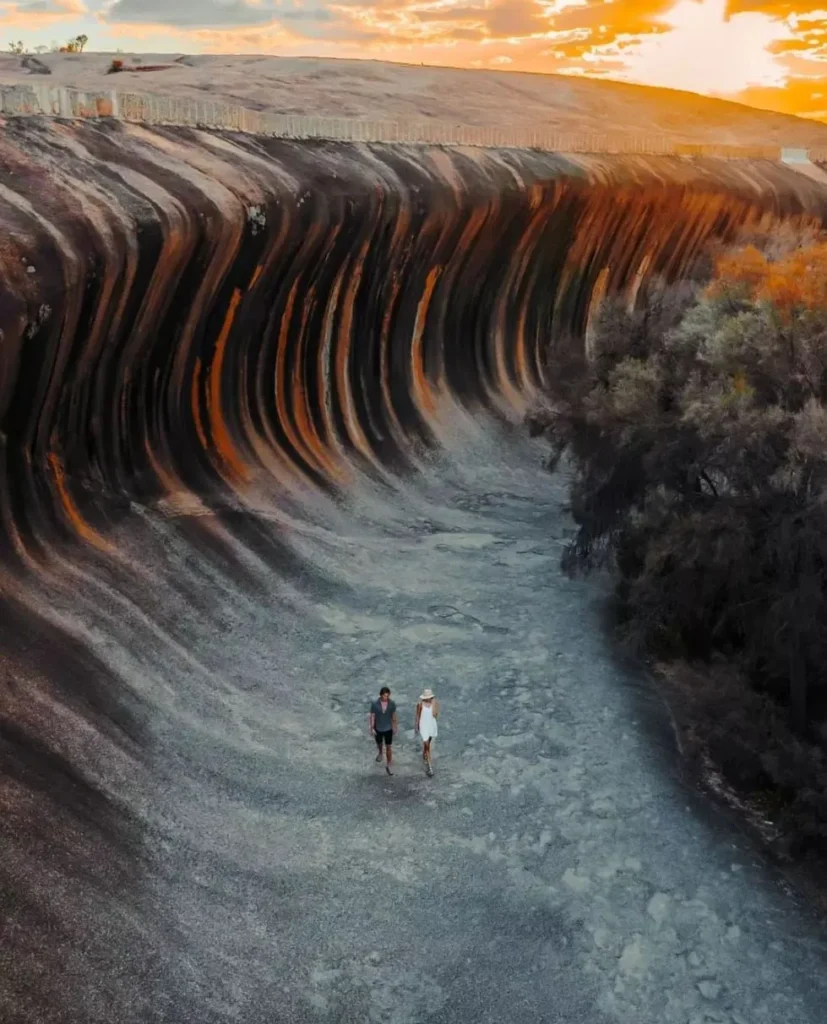
While the Pinnacles are the main event, the surrounding region of Western Australia has so much more to offer. Drive along the Indian Ocean Drive, and you’ll see some of the state’s most beautiful coastal scenery, from the white sandy beaches of Rottnest Island to the rugged cliffs of Kalbarri National Park. You’ll pass through quaint coastal towns like Cervantes, home of the Western Rock Lobster and Monkey Mia, where the wild dolphins come to play.
If you want to extend your adventure, nearby attractions like Wave Rock, Karijini National Park, and Ayers Rock offer even more of Western Australia’s stunning scenery. Yanchep National Park is another great spot, with walking trails, wildlife encounters and the chance to learn about Aboriginal culture and Indigenous cultures that have a deep connection to the land.
Margaret River, Swan Valley and more: Coastal and Foodie Landscapes


If you love wine and food, Margaret River or Swan Valley is a must-visit. Both regions are wine regions and you can enjoy a glass of wine while taking in the views. The food landscape in these areas is just as impressive, with award-winning restaurants serving up fresh local produce, including the famous Western Rock Lobster. After a day of exploring the Pinnacles, there’s no better way to relax than with a glass of wine and a delicious meal in one of Western Australia’s most beautiful regions.
Practical Info
The Pinnacles are in Nambung National Park, 2 hours north of Perth along the Indian Ocean Drive—a great day trip from the city or a stop on your longer coastal WA road trip. There’s a visitor centre at the Pinnacles with information on the history, geology and Aboriginal culture of the area, as well as a gift shop and picnic facilities. Guided Australian Pinnacles tours are available if you want to learn more about the geological formations and history of the Pinnacles, and Pinnacle Tours offers full-day packages with transport and a guide.
If you’re into wildlife, the Pinnacles have plenty of opportunities for wildlife spotting. Keep an eye out for emus, kangaroos and various bird species as you walk through the desert. If you’re visiting in spring, you’ll also see wildflowers in bloom, adding a splash of colour to the yellow sand.
The Pinnacles can be visited all year round, but the best time to go is during the cooler months of April to October when the temperatures are more comfortable for walking. Sunset and sunrise are the best times to visit, as the light creates long shadows and a golden glow across the desert. If you’re lucky you might even get to see a starry night sky on a clear night with the Pinnacles as a perfect backdrop for stargazing.
Walking the Pinnacles is a chance to get up close and personal with nature and one of WA’s most famous landscapes. Whether it’s the history, the geology or just the experience itself, you’ll be hooked.
FAQ
How were the Pinnacles formed?
The Pinnacles were formed from seashells that accumulated on an old sea floor. Over time they were compressed into limestone and then wind and water erosion exposed and shaped the formations we see today.
How far are the Pinnacles from Perth?
The Pinnacles are in Nambung National Park, about 2 hours drive from Perth along the Indian Ocean Drive. The drive is scenic and you will see other great landmarks along the way.
Can you walk among the Pinnacles?
Yes, visitors can walk through the Pinnacle Desert on several walking trails or drive through if you prefer to see the formations from your car.
What else is near the Pinnacles?
Nearby are Rottnest Island, where you can see the famous quokkas, and Ningaloo Reef, where you can snorkel or dive into the coral reefs. The Margaret River and Swan Valley wine regions are also not far away, and you can indulge in food and wine in beautiful settings.
When should I visit the Pinnacles?
April to October is the best time to visit. Sunrise or sunset is the best time for photography and the temperature is more comfortable to walk around the beautiful scenery.
